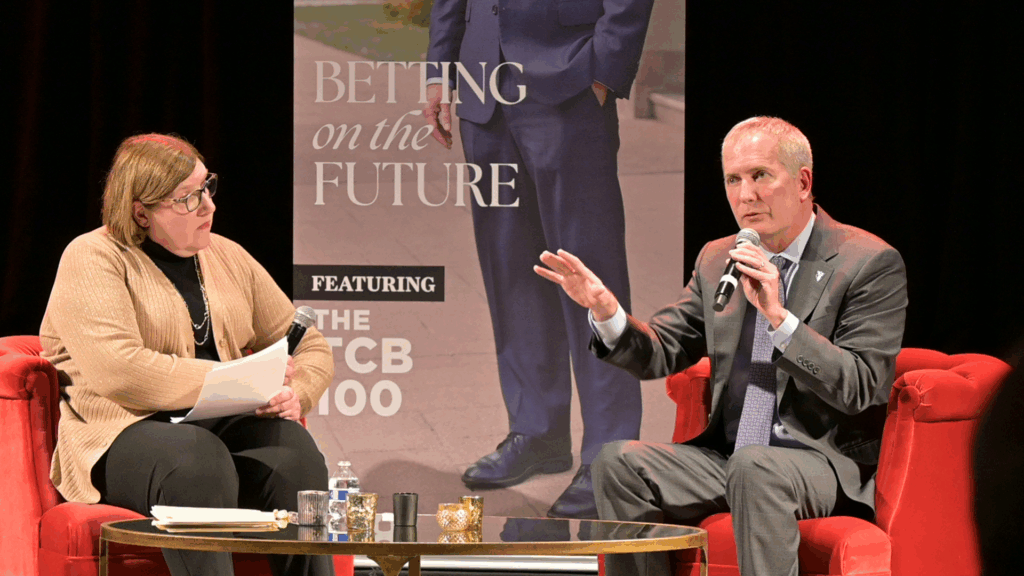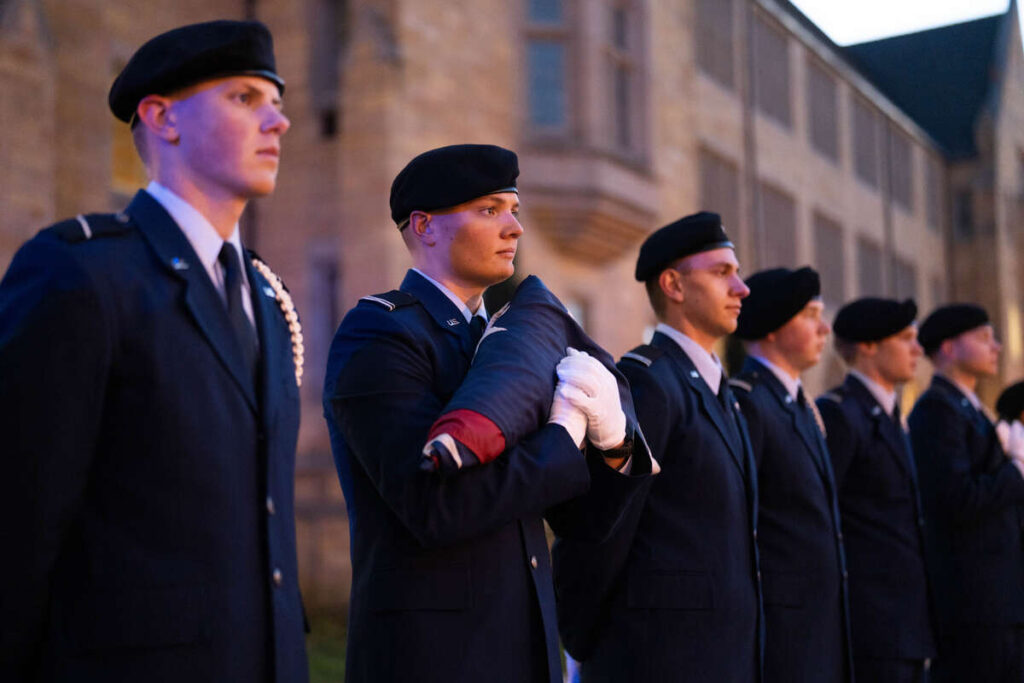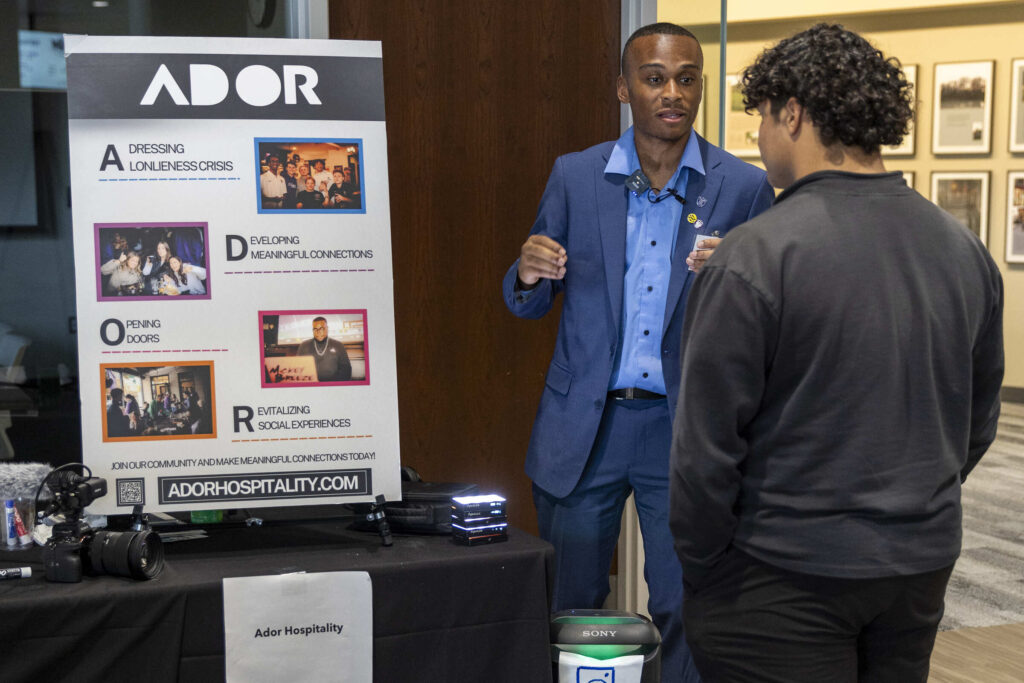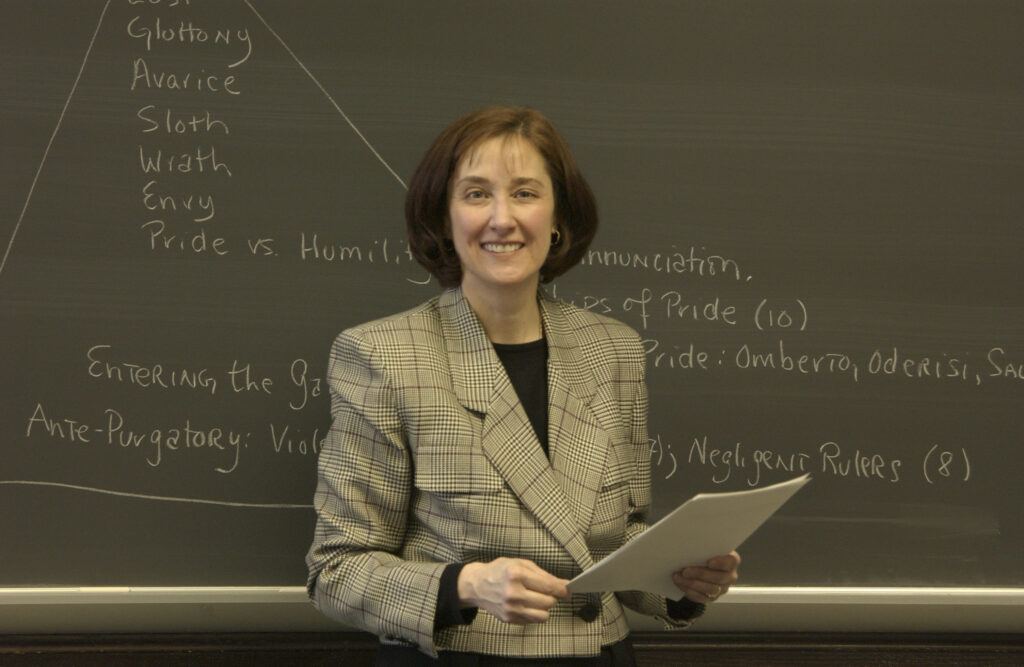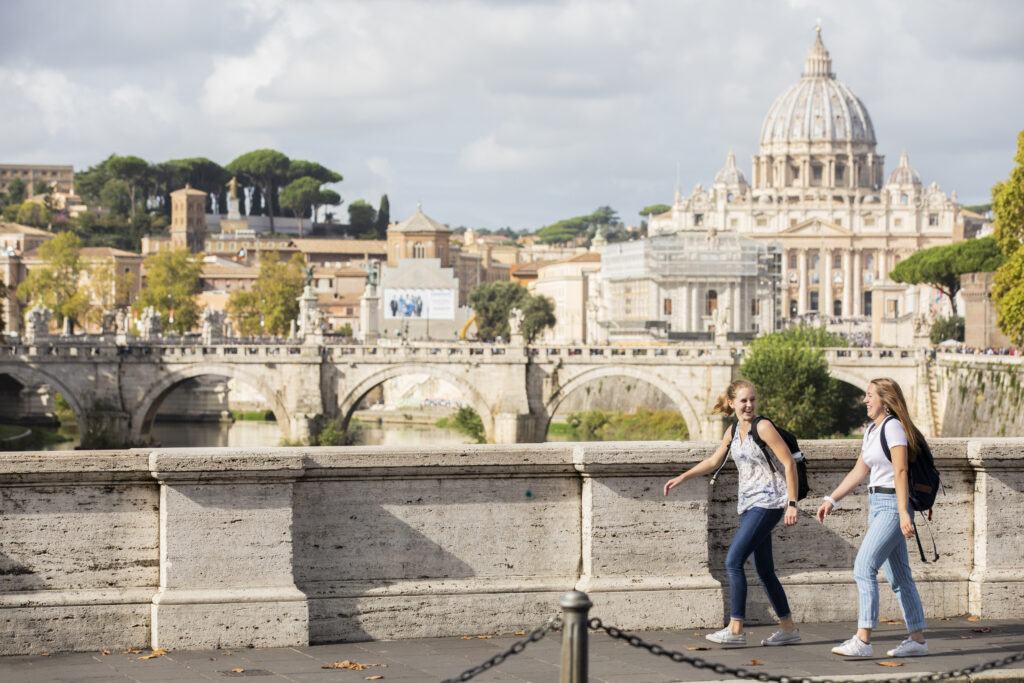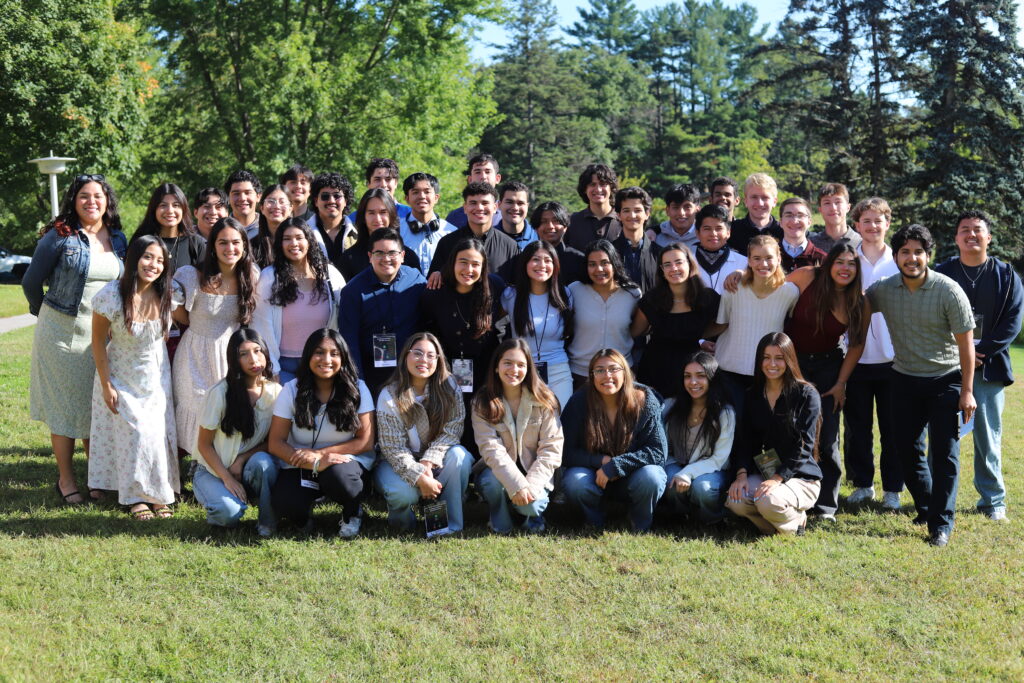O’Shaughnessy Hall will fall to the wrecking ball next month to make way for the new Anderson Student Center, and with the demolition will disappear a reminder of an era not quite like any other in the 125-year history of the University of St. Thomas.
On Wednesday, St. Thomas officials removed and opened the time capsule that was placed behind the cornerstone near the entrance to O’Shaughnessy Hall during its construction in 1939. (See below for a slide show of the early years of O'Shaughnessy Hall.)
The tin box contained newspapers, invitations and programs for college and academy graduation ceremonies, and a 1939 Canadian silver dollar – nothing out of the ordinary, in one sense, but also surprising in that all of the printed items remain in pristine condition.
Those contents, pored over by the crowd in the O’Shaughnessy-Frey Library Center’s “Leather Room” that bears the bust of benefactor Ignatius Aloysius O’Shaughnessy, brought back many fond memories of one of St. Thomas’ most illustrious alumni.
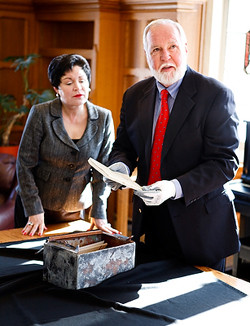
Cheryl and John O'Shaughnessy, grandson of benefactor I.A. O'Shaughnessy, examine the contents of the hall's time capsule.
John O’Shaughnessy, a grandson of “I.A.” and a 1957 alumnus of St. Thomas Academy, and his wife, Cheryl, attended Wednesday’s event. They, like others, marveled over the generosity of the family patriarch and how much he loved St. Thomas.
The I.A. O’Shaughnessy legend is well-known and often told. Expelled from St. John’s University in 1902 for drinking beer, the 16-year-old boy stopped at St. Thomas on his way home to Stillwater and bumped into Father John Foley, president of the college. Foley took O’Shaughnessy to dinner, listened to his story and accepted him as a student after he admitted he had done wrong.
O’Shaughnessy graduated in 1907 and went on to become the largest independent oil operator in the United States, amassing great wealth and giving most of it away – with St. Thomas and Notre Dame as primary benefactors. (To read more about O’Shaughnessy, see the winter 2007 St. Thomas magazine profile and blog today in The Scroll.)
As O’Shaughnessy’s sons became teenagers, they enrolled at St. Thomas Academy, then on the college campus, and he became more involved in the life of his alma mater. He joined the Board of Trustees in 1938.
There had been talk for years of the need for an athletics building that would provide more opportunities than existed in the Armory (which was razed in 1981 to make way for Schoenecker Arena and Coughlan Field House).
A 1932 memo written by Father William Cunningham, dean of studies, during the heart of the Great Depression lamented the lack of a swimming pool and how students had to travel to the YMCA, Macalester or St. Catherine to swim.
“But the problem is much larger than this,” Cunningham said, emphasizing “the importance of recreation in shaping the life ideals of young men. Those of us in college work see this in the fact that the development of a wholesome and vigorous ‘school spirit,' i.e., a loyalty to the ideals for which the college stands, is conditioned by the degree to which the recreational life of the student body is centered upon the college campus.”
Cunningham proposed a two-story wing on the west end of the Armory, duplicating the Club House (later renamed Foley Theater) on the east end. Ultimately, Ellerbe and Co. architects developed plans for a separate building clad in the same Mankato limestone featured on Aquinas Hall.
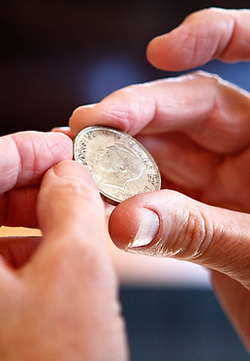
A 1939 Canadian silver dollar was found in the time capsule. Silver dollars were not minted in the United States at that time.
O’Shaughnessy became interested in the project, and he reached an arrangement with Archbishop John Gregory Murray: O’Shaughnessy would cover the costs of the $400,000 athletics building if Murray led the fund-raising efforts for what would become Albertus Magnus Hall in 1947.
Ground was broken for O’Shaughnessy Hall in the fall of 1938, with Dunnigan Construction of St. Paul as the contractor. Dunnigan laid the cornerstone and inserted the time capsule on the evening of June 5, 1939, a half hour before the college’s graduation ceremonies.
O’Shaughnessy became involved in planning the building and made sure his wishes were followed closely. He wasn’t pleased, for example, with the color scheme of the women’s parlor and ordered the tile replaced. He also helped to choose the furniture for the student lounge.
The building would be called one of the finest in the region. Features included the third-floor basketball courts with an electronic scoreboard, a natatorium with underwater lights, squash and handball courts, classrooms, four-lane bowling alley, billiards room, massage room and separate locker rooms for home and visiting teams. (To read alumni memories of O'Shaughnessy Hall, see OSH Remembered.)
“Here’s Your Christmas Present” stated The Aquin headline in December 1939, and an Aquin reporter advised: “When you line up a shot on the billiard table in O’Shaughnessy Hall and say to the fellow next to you, ‘Gimme room, chum,’ look twice, because that ‘chum’ may be Ignatius O’Shaughnessy, donor of the building. Mr. O’Shaughnessy looks forward to a dip in the pool and a workout on the handball courts. He already has scheduled a bowling match with Father (James) Moynihan (the president).”
A Minneapolis Times-Tribune headline suggested, “One pair of wings for Mr. O’Shaughnessy,” and its reporter, after a tour of the building, called him “an angel.”
Murray and a bevy of dignitaries, including Gov. Harold Stassen, came to campus on Jan. 31, 1940, for the blessing and dedication of the building. O’Shaughnessy told the audience that he had long believed St. Thomas needed new recreational facilities.
“I have had in mind for some time to do something in that direction,” he said. “It was only natural that I should turn to the institution which gave me so much in my youth. What I have done, I did in appreciation of what I have received, what my sons are receiving now . . . and what I hope their children will receive.”
Turning to Murray, O’Shaughnessy concluded, “Your Excellency, I am giving this building to you without any expectation of reward in this life. It is a gift from my heart. May others follow my example!”
O’Shaughnessy served on the Board of Trustees for 35 years, until his death in 1973, and his subsequent contributions led to the construction of O’Shaughnessy Stadium in 1946, O’Shaughnessy Library in 1959 and O’Shaughnessy Educational Center in 1971. He also contributed to the construction of Albertus Magnus and Murray halls and led the fund drive that allowed St. Thomas Academy to move to Mendota Heights in 1965.
As it turns out, others certainly followed O’Shaughnessy’s philanthropic example. St. Thomas raised a record $250 million during its Ever Press Forward capital campaign last decade and has raised $385 million of the $500 million goal in the Opening Doors campaign. Among the donors to Opening Doors are Lee and Penny Anderson, who have contributed $60 million for the construction of the new athletic and recreation complex, student center and parking ramp.
Before Wednesday’s time capsule ceremony, Cheryl O’Shaughnessy mentioned that she and John – grandson of the man who made O’Shaughnessy Hall possible – are good friends of the Andersons.
“Isn’t it a small world?” she asked. “It’s all so appropriate the Andersons have made such a generous gift for a new athletics building.”
Just as I.A. O’Shaughnessy did more than 70 years ago.
[slideshow id=1]
